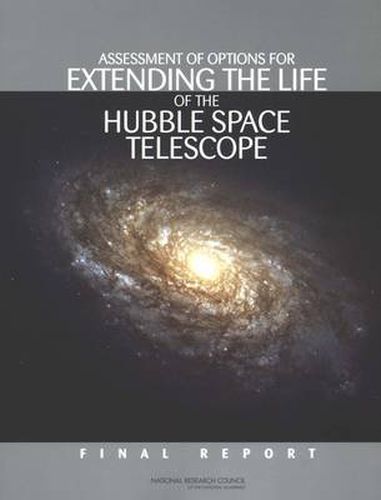Readings Newsletter
Become a Readings Member to make your shopping experience even easier.
Sign in or sign up for free!
You’re not far away from qualifying for FREE standard shipping within Australia
You’ve qualified for FREE standard shipping within Australia
The cart is loading…






The Hubble Space Telescope (HST) has operated continuously since 1990. During that time, four space shuttle-based service missions were launched, three of which added major observational capabilities. A fifth ? SM-4 ? was intended to replace key telescope systems and install two new instruments. The loss of the space shuttle Columbia, however, resulted in a decision by NASA not to pursue the SM-4 mission leading to a likely end of Hubble’s useful life in 2007-2008. This situation resulted in an unprecedented outcry from scientists and the public. As a result, NASA began to explore and develop a robotic servicing mission; and Congress directed NASA to request a study from the National Research Council (NRC) of the robotic and shuttle servicing options for extending the life of Hubble. This report presents an assessment of those two options. It provides an examination of the contributions made by Hubble and those likely as the result of a servicing mission, and a comparative analysis of the potential risk of the two options for servicing Hubble. The study concludes that the Shuttle option would be the most effective one for prolonging Hubble’s productive life.
$9.00 standard shipping within Australia
FREE standard shipping within Australia for orders over $100.00
Express & International shipping calculated at checkout
The Hubble Space Telescope (HST) has operated continuously since 1990. During that time, four space shuttle-based service missions were launched, three of which added major observational capabilities. A fifth ? SM-4 ? was intended to replace key telescope systems and install two new instruments. The loss of the space shuttle Columbia, however, resulted in a decision by NASA not to pursue the SM-4 mission leading to a likely end of Hubble’s useful life in 2007-2008. This situation resulted in an unprecedented outcry from scientists and the public. As a result, NASA began to explore and develop a robotic servicing mission; and Congress directed NASA to request a study from the National Research Council (NRC) of the robotic and shuttle servicing options for extending the life of Hubble. This report presents an assessment of those two options. It provides an examination of the contributions made by Hubble and those likely as the result of a servicing mission, and a comparative analysis of the potential risk of the two options for servicing Hubble. The study concludes that the Shuttle option would be the most effective one for prolonging Hubble’s productive life.